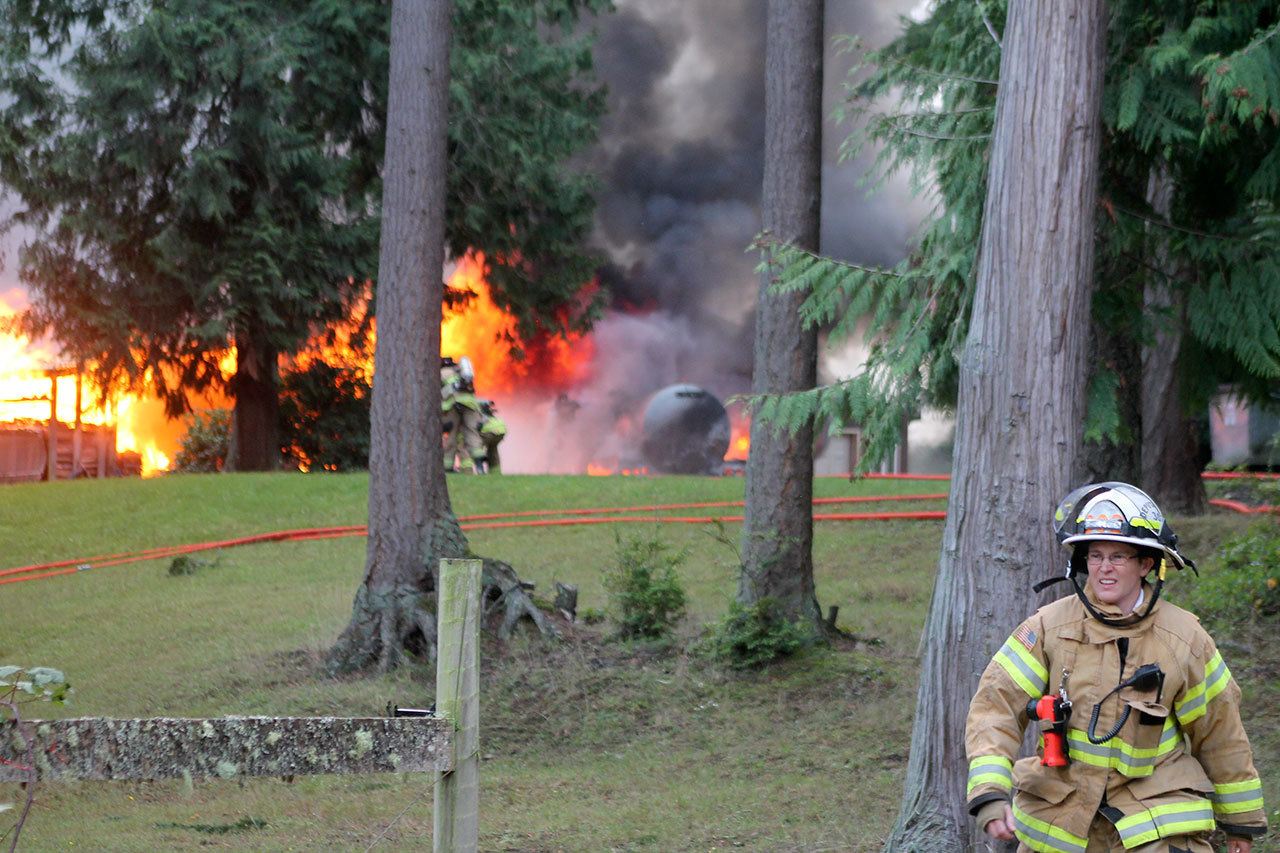The fire service has traditionally been dominated by men, and continues to be in many departments across the country.
But that isn’t the case for South Whidbey Fire/EMS.
“When I first got here, one of my realizations was that there were a lot of females because I came from a department that didn’t have many,” said Deputy Chief Wendy Moffatt. “That was enlightening and exhilarating, and I think it also shows we’re a good representation of our community.”
According to data from the National Fire Protection Association, 3.4 percent of firefighters across the country in 2012 were female. That statistic only includes career firefighters and excludes administrators, managers and volunteers.
South Whidbey Chief Rusty Palmer said female firefighters are much better represented in volunteer fire departments, which makes up the majority of departments across the country.
However, the gender makeup for South Whidbey Fire/EMS’s career firefighters, volunteers and even in leadership roles are telling when compared to the national average. The district is 39 percent female overall, where 27 of the 69 current members are female. Of the seven paid career firefighters, two or 28 percent are female compared to 3.4 percent nationally. One of four chief officers are female, which Palmer and Moffatt say is rare.
Of the 36 firefighters in South Whidbey Fire/EMS, 12 or 33 percent are female. The medical response team is 56 percent female, although women are much better represented in that field, Palmer said.
The numbers suggest a progressive fire district that gives equal opportunity to women who are up for the job. Palmer says he’s an advocate for women in the fire service and that it’s an important topic, although he made it clear the district doesn’t give preference to anybody based on their gender. The job isn’t made any easier for the ladies on the team, either.
“The job is for a firefighter, so we look at the person and decide if they’re capable of doing the job rather than looking at a person’s gender,” Palmer said. “Hiring women is not something we consciously look at doing, but we design the application process to be fair to both men and women and a challenge for both.”
Moffatt says things have changed since she first joined the fire service 23 years ago. Gender inequality continues to be an issue within the fire service, though, whether that entails a lack of women in leadership roles or misogyny experienced while on the job. Moffatt was the first female firefighter to join her first department in Pierce County, and says she has experienced discrimination in the past due to her gender. But the dynamic of being a woman in a male-dominated industry drives her to succeed more than anything else.
Now she’s a Deputy Chief.
“It’s never made me uncomfortable being a woman in a man’s industry, I’ve always embraced it and used it to drive me to do a better job,” Moffatt said. “This team is open, accepting and we’d love to have more volunteers. But women have to meet the same standard as men, there’s no special treatment.”
Part-time firefighter Carlee Mills says it can be crucial to have both genders represented during medical and fire responses. Some patients may feel uncomfortable surrounded by men and others by women, she said.
For example, a female patient involved in a domestic violence incident may feel uncomfortable surrounded by a team of men.
“With some patients, I’ve experienced them thinking I can’t do the job because I’m a pretty female,” Mills said. “But I think most patients realize some jobs call for men and some call for women because it’s situational.”
Although the women of South Whidbey Fire/EMS may at times feel surrounded by men, they were all clear that they don’t feel the need to put on a tough facade around their colleagues. Part-time firefighters Alex McMahon, Mills and Moffatt say any desire to psychologically want to better their colleagues doesn’t come down to a gender dynamic, but combativeness.
“It’s more of a competitive thing for me rather than being a female and needing to prove myself to the guys,” McMahon said. “We’re all competitive and we strive to improve ourselves.”
Palmer says he wants young girls to grow up wanting to be firefighters, just like boys do. The women of South Whidbey Fire/EMS echoed the same sentiment, and believed it’s important to highlight that women can fight fires and save lives just as well as men. But while they believe it’s important to shine a light on increasing female involvement in the fire industry, they didn’t want to be made heroes.
They’re just trying to fulfill their duty.
“I think it’s great to focus on the female side of the fire industry, but personally, I’m just doing my job,” Volunteer firefighter Mari St. Amand said. “I’m not trying to be the poster child of anything.”


